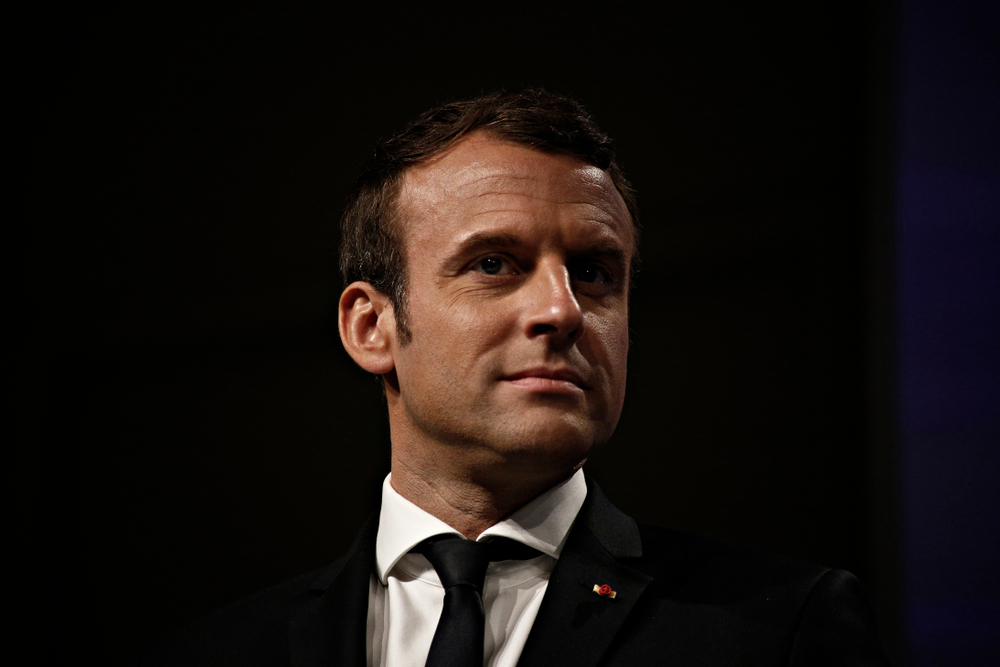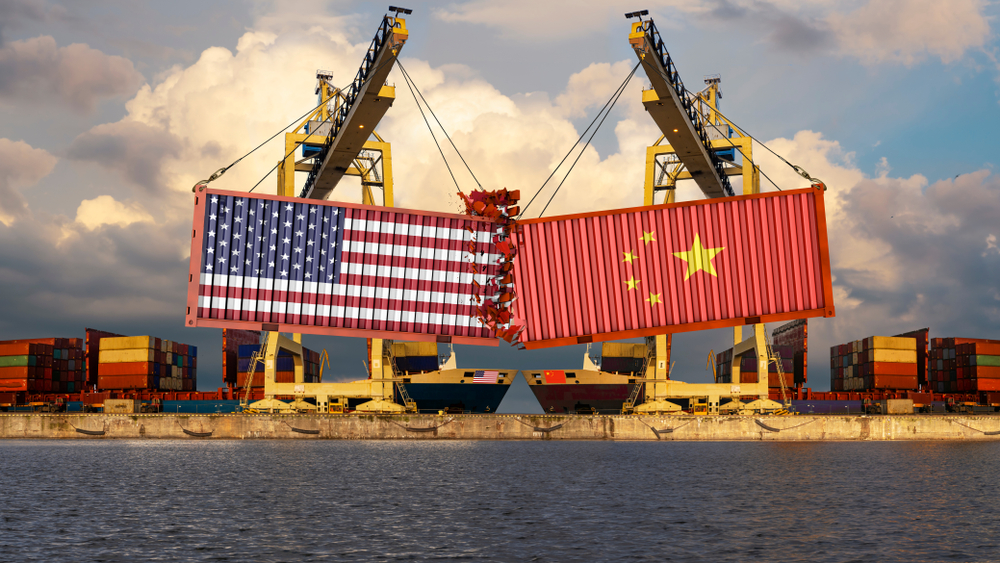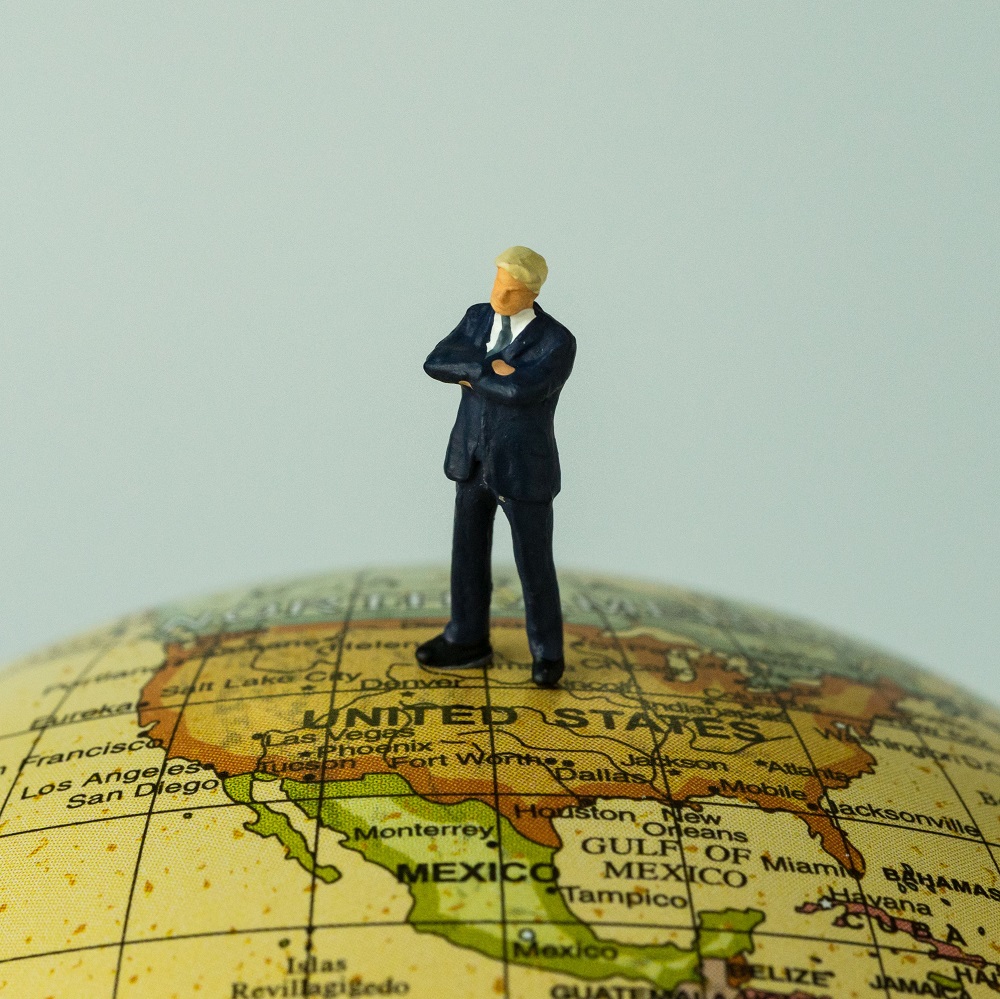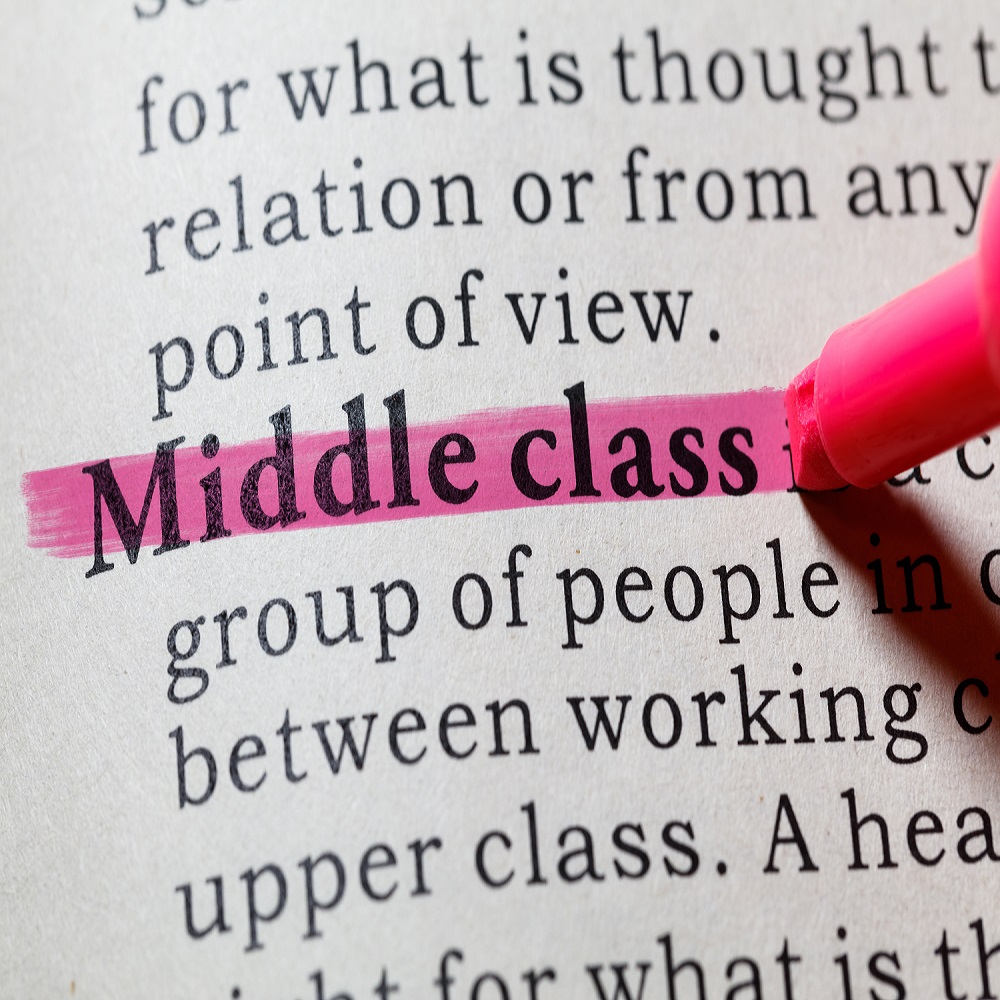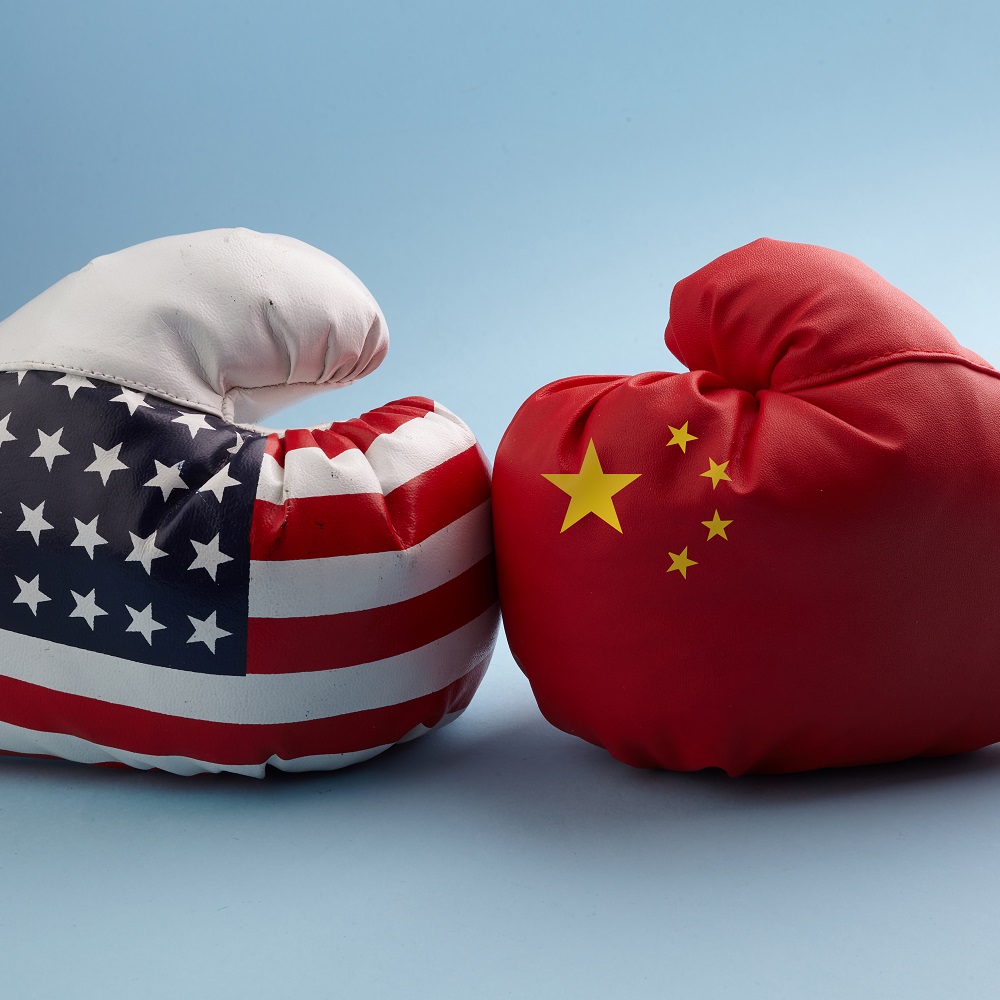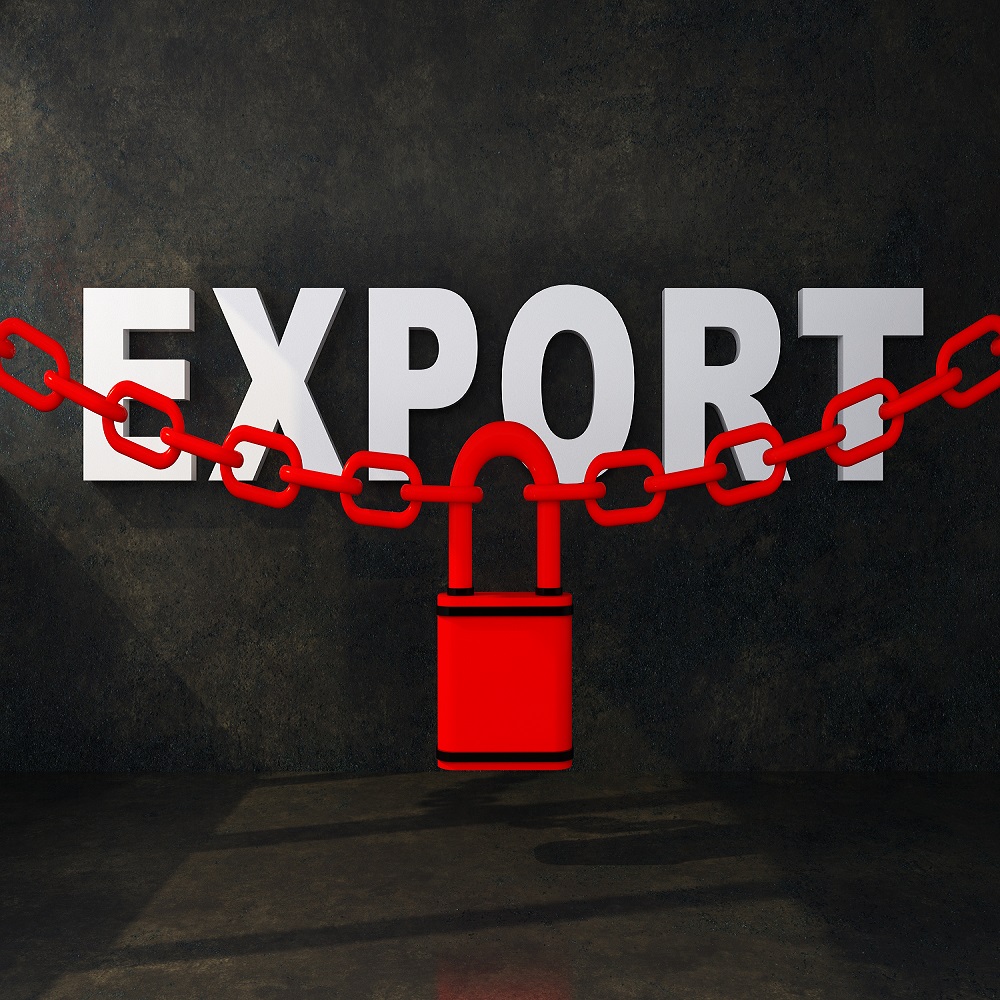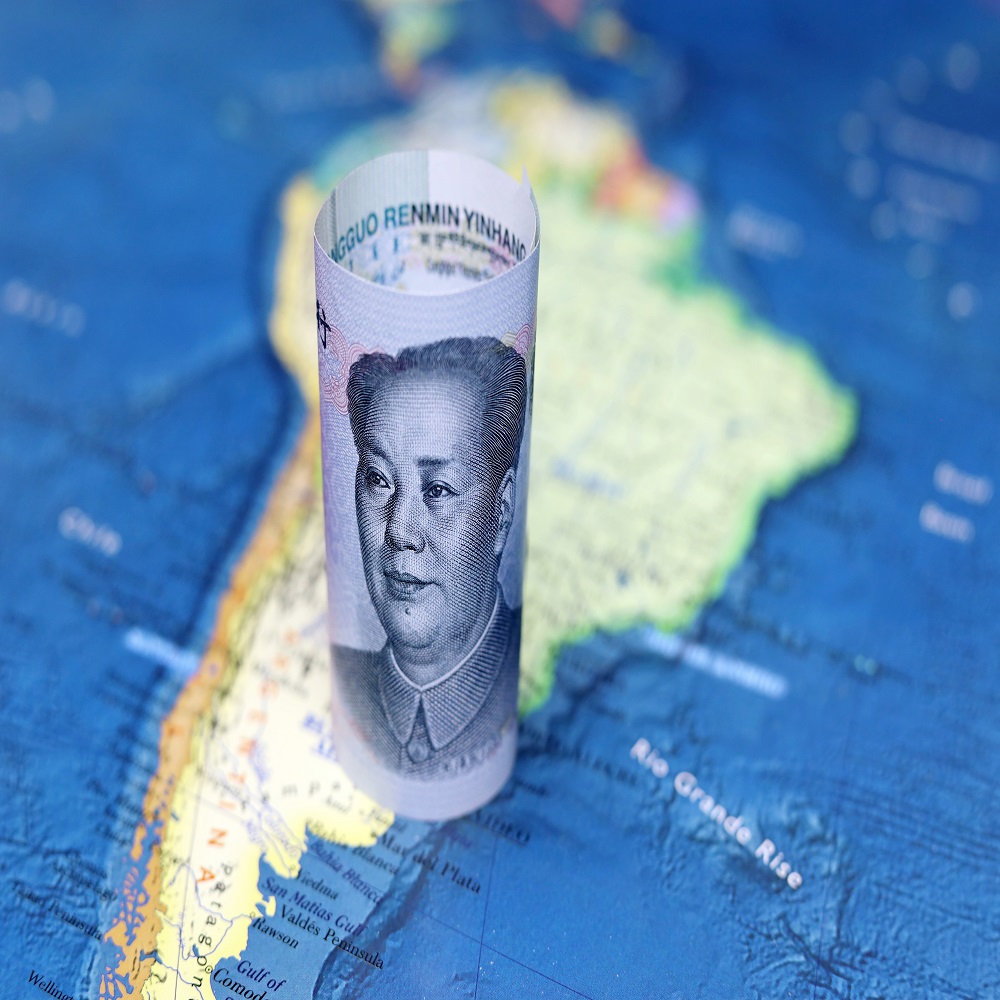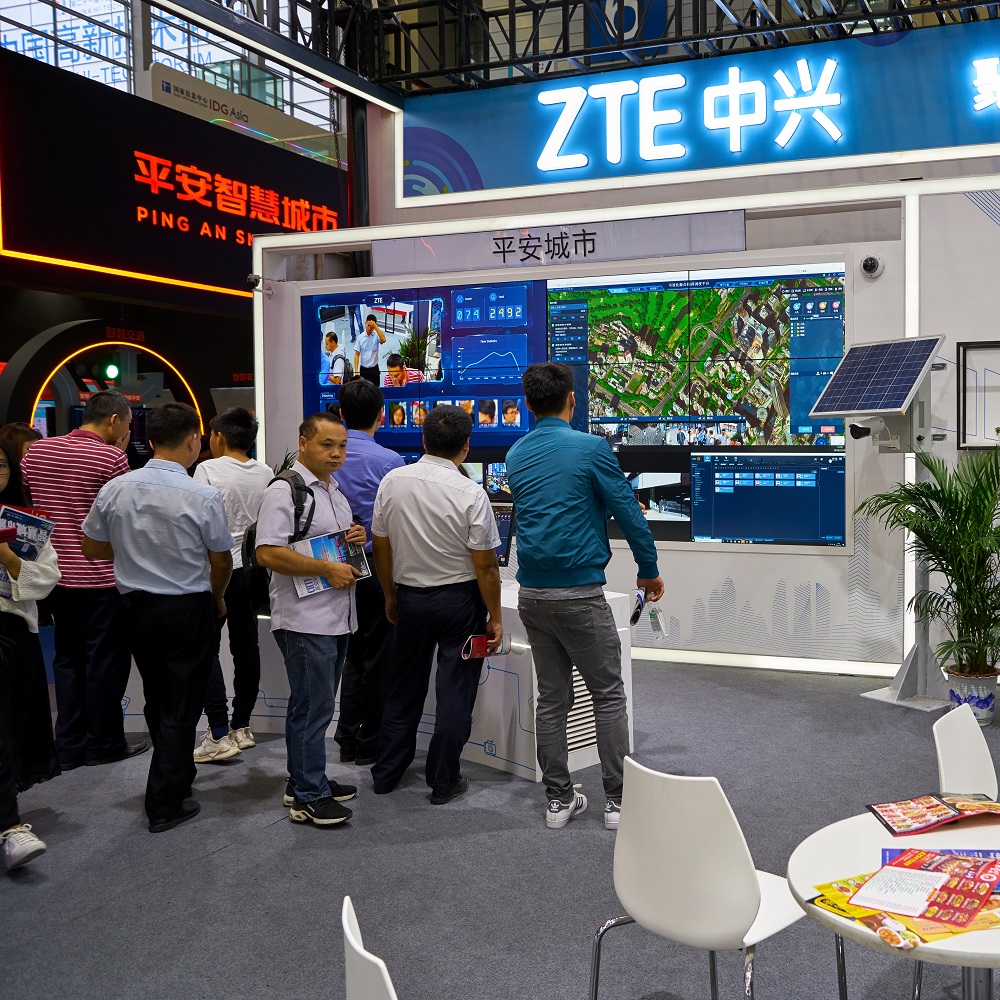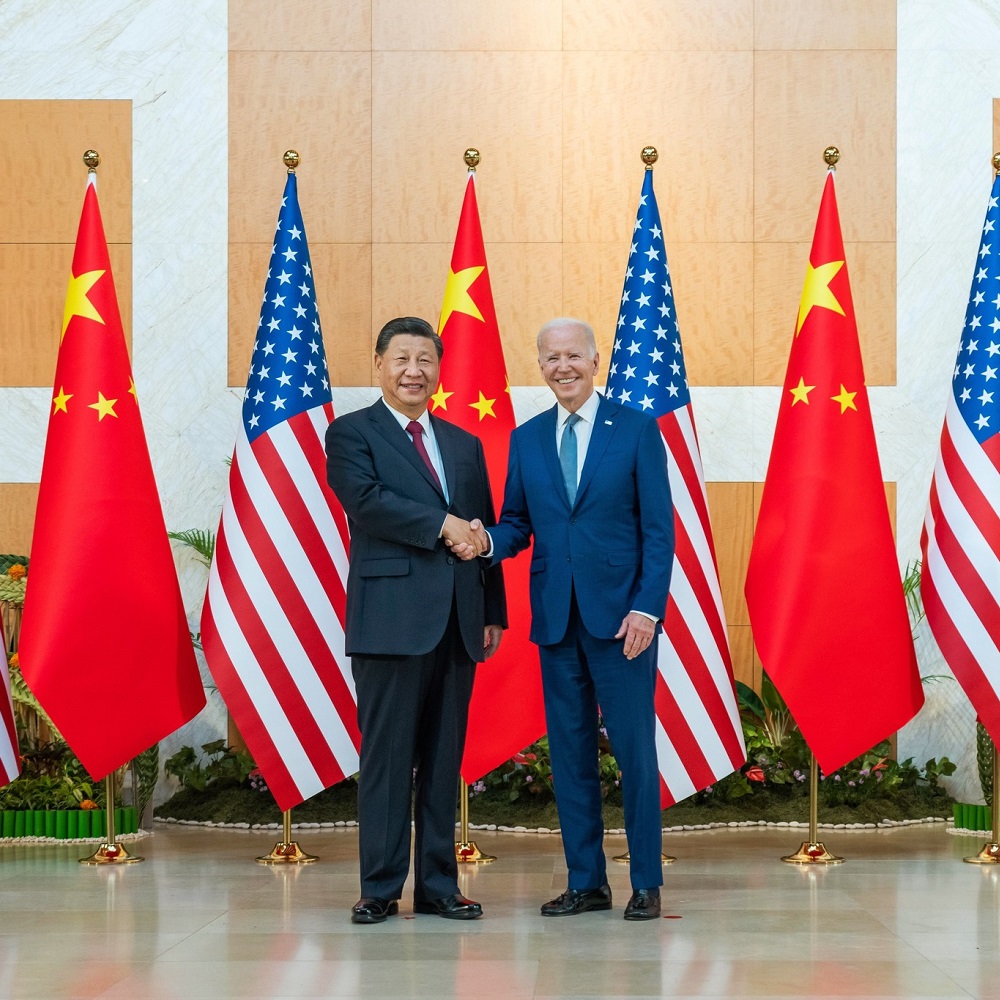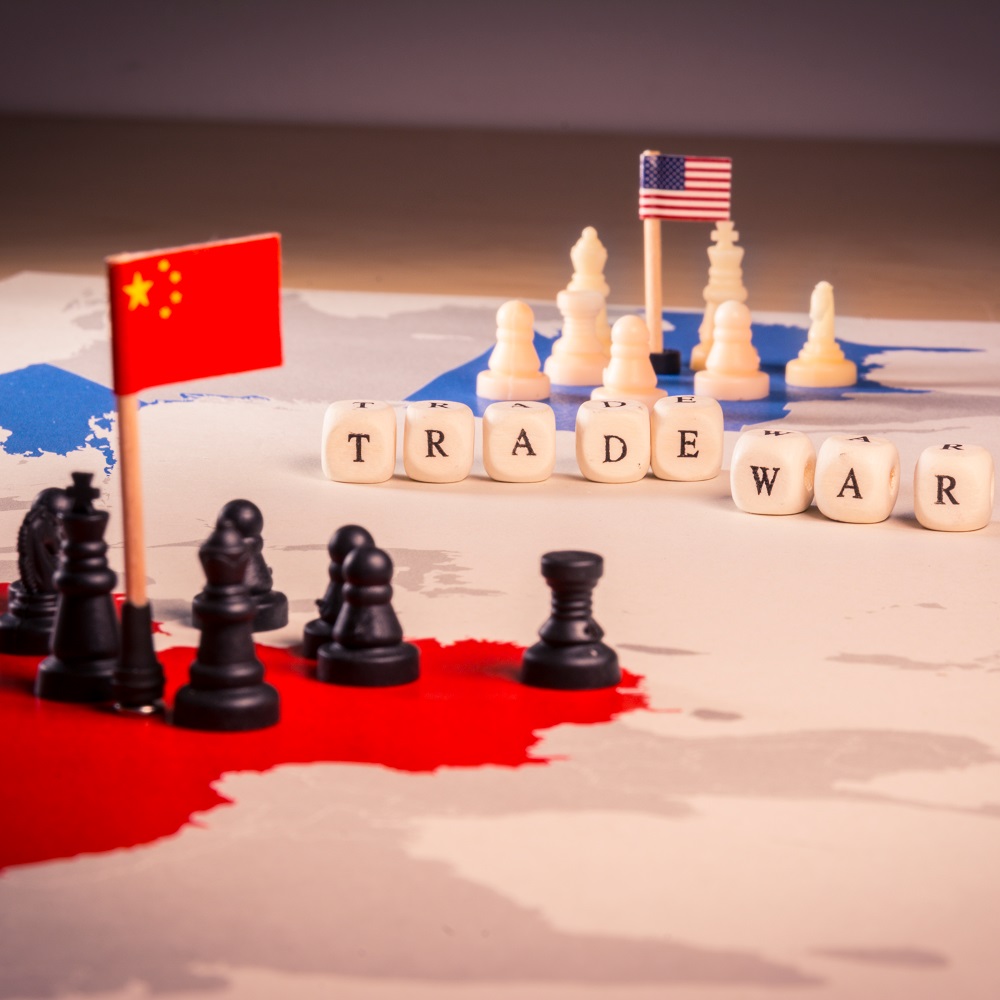Export bans and inter-state tensions: The need for a revised WTO export bans framework to address worrying state behaviour at the peak of the pandemic
by Dr. Seebal Aboudounya
Please note that this article is only available in English.
Abstract:
During the peak of the Coronavirus (SARS-CoV-2) pandemic, some states imposed export bans on medical goods to prevent their exportation during the emergency situation brought about by the Covid-19 pandemic. However, the manner in which this policy was applied caused much discontent especially between neighbouring countries and allies, particularly due to the confiscation of pre-ordered goods destined for countries also experiencing a crisis situation. This paper analyses the rise of inter-state tensions due to export bans at the peak of the pandemic and calls for the need to revise the World Trade Organization’s (WTO) export bans framework which currently contains a number of gaps exacerbating the problem and leaving a legal gap. The paper discusses those gaps in the WTO’s legal framework and highlights the areas in need of revision to avoid repeating the troubles of the past pandemic.
Introduction
Faced with political pressure and an extraordinary situation during the Coronavirus (SARS-CoV-2) pandemic, some countries resorted to the use of export bans as a tool to ensure that they have enough medical supplies for their population. However, their use of export bans also involved the confiscation of medical goods destined for delivery to their neighbours and allies. Such behaviour provoked discontent among those states expecting the delivery of their ordered medical supplies which were urgently needed as the death-toll from Covid-19 was sharply rising.
This article starts by explaining the instances where confiscations using export bans occurred, namely between the United States and Germany, the US and Barbados as well as France and the United Kingdom. The paper also discusses the ‘near misses’ involving some European states where the export bans were initially used to confiscate the goods of other European countries, but then those goods were ultimately allowed to be delivered abroad to their delivery location. The discussion then shifts to the international legal framework of the World Trade Organization (WTO) governing the use of export bans and then shows how this legal framework is flawed in certain areas as it contains some gaps that may be exploited for conducting unconstrained confiscation operations. An overview of existing studies on export bans then reveals that this policy is already harmful in several ways (Evenett 2020a; Bown 2020; Barichello 2020). The article then ends with a concluding discussion emphasising how export bans are particularly harmful when used in relation to pre-ordered goods and reiterating the need for a revised WTO legal framework on export bans.
Incidents of confiscations using export bans
The three incidents below all occurred during the peak of the covid pandemic in 2020 when countries faced life and death situations. The three cases also involved the use of export bans to justify the confiscation of medical goods pre-ordered by other states.
US vs Germany
This incident occurred on 3rd April 2020 involving the United States and Germany (Crump 2020). This particular event captured a lot of media attention and included the release of high-level statements from both sides, with accusations of “modern piracy” being directed towards the US (BBC 2020a). The main issue here was that approximately 200,000 N95 masks that Germany had ordered for its police force were diverted to the United States (Selinger 2020). The masks shipment dispatched from China from an American company was diverted to the US during a transfer between planes in Thailand (Selinger 2020). Germany stated that the masks were confiscated in Bangkok by American officials and that those masks were ordered from a US producer (Crump 2020; DW 2020).
The next day, the US company 3M denied Germany’s claims and told a German news agency that it did not have any paperwork regarding a shipment for Germany (DW 2020). However, Germany had made it clear on 3rd April that it had ordered and paid for those urgently needed masks from a US company (Berlin 2020). In fact, Germany referred to earlier accusations made by French officials against the US for buying France’s masks in China and added that “the U.S. administration has obliged the American conglomerate 3M by law to supply the U.S. with as many N95 respiratory masks as possible, such as those used in hospitals” and that “the group also manufactures in China” (Berlin 2020a).
Significantly, the media was already reporting how the American company 3M “has been prohibited from exporting its medical products to other countries under a Korean-War-era law invoked by President Donald Trump” (BBC 2020a). The BBC (2020a) added that “on Friday [3rd April], Mr Trump said he was using the Defence Production Act (DPA) to demand that US firms provide more medical supplies to meet domestic demand”. Zooming in on Trump’s official statements during the Coronavirus Task Force Press Briefing reveals significant information when he stated that:
I’m also signing a directive invoking the Defense Production Act to prohibit export of scarce health and medical supplies by unscrupulous actors and profiteers. The security and Secretary — the Secretary of Homeland Security will work with FEMA to prevent the export of N95 respirators, surgical masks, gloves, and other personal protective equipment. We need these items immediately for domestic use. We have to have them. […] We’ve already leveraged the DPA to stop the hoarding and price gouging of crucial supplies. Under that authority, this week, the Department of Health and Human Services, working with the Department of Justice, took custody of nearly 200,000 N95 respirators, 130,000 surgical masks, 600,000 gloves, as well as bottles — many, many, many bottles — and disinfectant sprays that were being hoarded (Whitehouse 2020, emphasis added).
Trump’s statements are important because they include the significant number of 200,000. Although Trump did not specify where those 200,000 N95 were confiscated from, the number remains important (BBC 2020a); it is the same number of masks that Germany reported. More importantly, the official statement also supports the fact that the DPA was used as a tool for confiscating goods. Trump’s statements describe these good as being ‘hoarded’ prior to their confiscation, however, the statements from Germany’s side indicate that those masks were intended for the German people. As significant as Trump’s statements were the ones made by Berlin’s Interior Senator who blamed the US for the confiscation of the N95 masks (DW 2020). In fact, he stated that:
We consider this an act of modern piracy. This is not how you deal with transatlantic partners. Even in times of global crisis, there should be no wild west methods. I urge the federal government to urge the United States to comply with international rules (Berlin 2020b; BBC 2020a).
As such, this incident saw direct statements from the German side, indicating that Germany saw the US’ behavior as deviating from international rules. Yet despite Trump’s statements in the press briefing, he directly addressed the German incident, denying the claims by saying that “there has been no act of piracy” (Crump 2020). Similarly, the spokeswoman for the American embassy in Bangkok denied that the US had knowledge of the mask shipment bound for Germany (Tanakasempipat 2020). Despite the US’ constant denial of state involvement, it remains a fact that an order of 200,000 masks destined for Germany was never delivered. Moreover, at no point did the developments mention non-state entities, but rather, the discourse had remained solely at the inter-state level and the main issue for discussion was the US’ use of the Defence Production Act to secure vital medical goods.
US vs Barbados
On the 5th of April, Barbados was brought into the picture when 20 ventilators donated to Barbados by a Philanthropist where “barred from exportation” by the US government (Barbados Today 2020). Moreover, as stated by the Barbadian Health and Wellness minister, these ventilators were already “paid for” (Barbados Today 2020). In explaining this incident, the Health minister clarified that “it has to do with export restrictions being placed on certain items” (Connell 2020). Thus, the Barbados incident was another instance where export bans were used as the justification for confiscating important medical supplies that were destined for another country. As for the US’ response to this incident, The Miami Herald wrote that a State department spokesperson’s email response “seemed to suggest that some previous media reports about seized medical exports may not be accurate” (Charles 2020). However, given that this is an incident relating to a Caribbean Island whose relations with the US are far from hostile, it is unlikely that this confiscation incident was characterised by significant inaccuracies.
France vs UK
Another instance of confiscation via export bans was reported during the pandemic, but this time, the location was Europe. The incident happened in March 2020 and had the UK’s National Health Service (NHS) as the victim and France as the accused. France’s actions were reported by Euronews when it stated that:
France has forced a face mask manufacturer to cancel a major UK order as the coronavirus-inspired scramble for protective gear intensifies. The National Health Service ordered millions of masks from Valmy SAS near Lyon earlier this year as COVID-19 threatened. But amid a global shortage, France earlier this week ordered the requisition of all protective masks made in the country (Euronews 2020). France’s export ban placed the company in an uncomfortable situation as it was prohibited from fulfilling the NHS’ order. Indeed, the company director commented that "the requisition does not allow any wiggle room for us to deliver to the NHS, but it is complicated because the NHS was the first client to order and uses our masks all year long” (Euronews 2020). It is important to note that four months later, the Guardian revealed that Valmy had a contract with the NHS that was signed in 2017 where this company “was required to deliver almost 7m FFP3 respirator masks to the UK at 17p per mask in a pandemic situation as soon as the order was activated” (Davies and Garside 2020). The NHS did indeed activate the contract in early February, however, the French “sweeping requisition decree” ultimately meant that France seized the masks within its borders (Davies and Garside 2020).
Near misses: tensions in Europe
The incidents below can be described as “near misses" as the accused states initially confiscated other state’s products, but eventually gave them back to their neighbours. The cases here are particularly useful for showing how the misuse of export bans has the potential to harm diplomatic relations between neighbouring states and allies, especially when the ban is placed over other states’ pre-ordered goods.
Germany vs neighbours
One of such instances occurred between Germany and Switzerland, but this time Germany was the accused. The incident was reported on the 9th of March 2020 and caused a strain in Germany’s relationship with Switzerland during the pandemic. The “diplomatic spat” started a week after the German government banned exports on most protective medical goods (Dahinten and Wabl 2020). Switzerland was particularly angered when 240,000 masks travelling to it were blocked from crossing the German border to enter Switzerland (Dahinten and Wabl 2020). Switzerland then called the German ambassador for “an emergency meeting” regarding this issue amid a very tense situation, especially when it hardly manufactures protective equipment itself (The Local 2020). Eventually after a call was scheduled between the leaders of both countries, Germany modified the ban on the 12th of March, adding exemptions and then removed it completely the following week (Hall et al. 2020).
Germany’s diplomatic relations were equally weakening with another neighbour, but this time, the neighbour was a European Union (EU) member. The point of conflict was of course the export ban on protective equipment. The Austrian Economy minister commented on this ban by stating that:
It can’t be that Germany is holding back products for Austria just because they happen to be stored in a German location […] these products are for the Austrian market, and unilateral moves by Germany are just causing problems in other countries (Dahinten and Wabl 2020).
Such statements indicate that placing export bans on other states’ goods seriously angers the importing states as such bans make them feel that their interests are being completely ignored by their counterparts.
France vs neighbours
France also got a share of the criticism in March when it seized the supplies of the Swedish company Mölnlycke located in France after announcing an export ban on masks and other medical goods (AP 2020; Marlowe 2020). The conflict erupted between France and Sweden when the French ban was placed over Mölnlycke’s Lyon Warehouse that is responsible for distributing personal protective equipment to Southern Europe as well as Belgium and the Netherlands (Marlowe 2020). Significantly, the seized stock was composed of 6 million masks, all of which “had been contracted for”, including a million masks each to Italy and Spain (Marlowe 2020).
Eventually, France allowed the shipments to go to Italy and Spain despite initial reluctance to do so (AP 2020). However, the easing of the situation was mainly due to the “crucial efforts” of Sweden’s prime minister who was thanked by Mölnlycke on the 4th of April for his role in the removal of the French export ban on the Lyon Warehouse (Mölnlycke 2020). It is important to note that this instance also made its way to the European Parliament on the 3rd of April where the French export ban was questioned and criticised as “yet another demonstration of the lack of European solidarity” (EP 2020). Thus, this specific incident resonated across the whole of Europe, and not in a positive way.
Export bans: the GATT framework
The international law on export bans falls under the competence of the WTO, particularly the General Agreement on Tariffs and Trade 1994 which itself is mainly composed of the 1947 GATT agreement (GATT 1994). Significantly, article XI of the agreement titled ‘General Elimination of Quantitative Restrictions’ prohibits the use of export bans when it states that:
No prohibitions or restrictions other than duties, taxes or other charges, whether made effective through quotas, import or export licences or other measures, shall be instituted or maintained by any contracting party on the importation of any product of the territory of any other contracting party or on the exportation or sale for export of any product destined for the territory of any other contracting party (GATT 1994).
However, the agreement leaves out certain exemptions where this prohibition does not apply, the relevant one here being “export prohibitions or restrictions temporarily applied to prevent or relieve critical shortages of foodstuffs or other products essential to the exporting contracting party” where the GATT clearly states that “the provisions of paragraph 1 of this Article shall not extent to” it (GATT 1994, XI, 2(a)). The emphasis on the temporary application of such measures is important and is further clarified in the WTO’s timely report on “export prohibition and restrictions” issued at the peak of the Covid pandemic where it explained that:
The reference to a measure that is "temporarily applied" indicates that the carve-out applies to measures applied for a limited time, taken to bridge a "passing need". In turn, "critical shortage" refers to deficiencies in quantity that are crucial, that amount to a situation of decisive importance, or that reach a vitally important or decisive stage, or a turning point (WTO 2020, annex 1).
Of relevance to the export bans legal framework is also Article XX of the GATT (1994) titled “General Exceptions” that states how:
Subject to the requirement that such measures are not applied in a manner which would constitute a means of arbitrary or unjustifiable discrimination between countries where the same conditions prevail, or a disguised restriction on international trade, nothing in this Agreement shall be construed to prevent the adoption or enforcement by any contracting party of measures […] (b) necessary to protect human, animal or plant life or health.
Thus, here the GATT agreement allows countries to use export bans when it is necessary to protect lives. The WTO’s report confirms the relevance of this exception to the Covid-19 situation when it explains that:
In the context of COVID-19, Article XX(b) of the GATT 1994 could be used to justify a ban or quantitative restriction on the exportation of goods, so long as such a measure would be necessary and effective in contributing to protecting the health of that country's citizens (WTO 2020, Annex 1).
Thus, in terms of international law, countries are allowed to make use of export bans when faced with exceptional circumstances. During the Covid pandemic, the WTO member states did indeed make use of the exceptions and exemptions codified in the GATT agreement while informing the WTO of their new policies (Pauwelyn 2020, 107). However, when life is back to normal, their use remains illegal. Thus, overall, the export bans legal situation can be described as residing in a ‘legal grey zone’ whereby their use, though normally prohibited, can be justified and permitted in serious situations requiring them (Pelc 2020, 349). Nonetheless, it is important to note that the international legal framework here does not provide clarification for situations where the export ban exemption is placed on pre-ordered or pre-paid-for goods supposed to go to other countries. Indeed, the current legal framework suffers from a number of ambiguities as explained below.
The first ambiguity relates to the term “destined goods.” When prohibiting export bans, article XI speaks of “export of any product destined for the territory of any other contracting party”. Thus, clearly, countries cannot put their hands on goods going to other countries for this would be illegal. However, the carve-out intended to “prevent or relieve critical shortages” is not detailed enough as to clarify if this also applies to goods “destined” for other countries (GATT, article XI, 2(a)). Even if the “destined” statement is applied to the exemption, the ambiguity remains.
Much of the ambiguity rests on how to interpret the term “destined” from the export prohibition paragraph: is the term “destined” applied here generally whereby a company in Country X is an exporter and thus it’s goods will naturally be “destined” for other countries, or does the term imply goods that are ready-to-travel to other countries who have already placed an order or paid for goods? Clearly, it’s the second interpretation when applied as an exemption that has been the cause of conflict between the states in the previous section. However, regardless of which interpretation is intended in the GATT, instances where countries confiscate orders destined for other countries is seen as politically and morally unacceptable by the latter; “modern piracy” was how Germany described it. Thus, whatever the world leaders had in mind when they agreed to this exemption, clearly it now needs a lot of clarification.
Secondly, there is ambiguity over the situation regarding donated goods. This is an important question especially given the Barbados case. Here the goods sold in country X were already bought in Country X (from a philanthropist in Country X) to be sent to country Y. Thus, a transaction had already taken place and the goods now belong to the philanthropist who is kindly giving this order to Country Y. Does an export ban apply to this situation? Logically, there is little to no justification for its application in this scenario, but the GATT agreement still needs to confirm this.
Thirdly, there is ambiguity over the situation of “guest” companies. Given the globalised world we live in, does this exemption apply to international companies geographically located in country X? This was the main cause of tension between Sweden and France when France imposed the export ban over the Swedish company’s Warehouse. A logical consideration of this situation would lead to a ‘no’ answer to this question, but it is also acknowledged that the company may be subject to the geographical jurisdiction and the laws of the country that it is located in. Thus, it is important that the relationship between the host country and the foreign company is clarified when it comes to export prohibitions.
Fourthly, there is ambiguity over the timeline of enforcing an export ban policy. The Covid crisis saw quick decisions being taken and implemented. This was particularly the case with export bans and was to the detriment of the importing states. In the case of the US-Germany incident, the confiscation of the masks on their way to Germany occurred hours before the US president announced invoking the defence production Act. In fact, the US policy on export restrictions became official on the 7th of April after the Federal Emergency Management Agency published it (Bown 2020). Significantly, FEMA stated that “this rule is effective from April 7, 2020 until August 10, 2020” (FEMA 2020). Thus, the obvious question arises: on what basis were the masks going to Germany confiscated? Similarly, on what basis were the ventilators destined for Barbados blocked by the US on the 5th of April? If the WTO steps in to advise on the implementation of such export bans, the situation would be greatly improved.
Finally, there is ambiguity over the extent to which one country may enforce its policy, particularly in other countries. The US-Germany case was sensationalised by an “international hunt” for masks in Bangkok; thus, here the US officials imposed the export ban on an American company in a foreign country outside their national jurisdiction. However, the question remains, is this permissible under the GATT? The GATT articles did not go that far, but it is important that the international legal framework answers this question.
Overall, several unanswered questions resulting from the brevity of the GATT’s article on export bans require answers. Filling in those gaps in the GATT would greatly improve the legal framework on export bans and ease tensions between member states. The next section takes a closer look at export bans, particularly their discussion in the literature and their unwelcome effects.
The effects of export bans
The academic literature on export bans mainly focuses on their effects, either on several states or on specific case-studies. Prior to Covid-19, a number of studies were mainly concerned with the effects of export bans following the food price crisis in 2007-2008 when countries made use of export restrictions on agricultural commodities in an attempt to stabilise domestic markets (e.g. Liefert, Westcott, and Wainio 2012; Dorosh and Rashid 2013; Timmer 2010). However, following the coronavirus pandemic, some studies have focused on their use on medical goods and agricultural goods as well as on their effects (Koppenberg et al. 2020; Pelc 2020; Evenett 2020b). Nevertheless, what unites almost all the studies on export restrictions is that they mainly agree that such bans do more harm than good.
The recent studies on export bans are important because they demonstrate how this policy results in negative effects. For example, Simon Evenett (2020a, 831) in his recent work argues that “export bans on masks, for example, erode the capability of trading partners to cope with the spread of COVID-19. Rather than beggar-thy-neighbour, export bans on medical supplies effectively sicken-thy-neighbour”. He further analyses the effect of the export ban from the perspective of the developing countries cut-off from receiving advanced medical equipment such as ventilators, and explains that whenever this policy is implemented, “a significant share of the world’s population” is prevented from accessing this vital equipment (Evenett 2020a, 832). Evenett (2020a, 833) therefore recommends that governments consider other alternatives to export bans that “do not impede foreign purchases”. Significantly, Evenett also discusses the effect of the export curbs on the exporting country itself and argues that this policy is counter-productive:
Whatever temporary gain there is in limiting shipments abroad, the loss of future export sales will discourage local firms from ramping up production and investing in new capacity, which is exactly what the WHO has called for. In practical terms, during a pandemic this mean that an export ban “secures” certain, currently available medical supplies at the expense of more locally produced supplies in the future (Evenett 2020a, 832).
Internationally, export bans have also been shown to have severe effects on several countries at once. Chad Bown’s (2020, 43) work on the Covid pandemic demonstrates how “taking supplies off the global market can lead to higher world prices and reduced quantities, harming hospital workers in need in other countries”. He also cautions that their use during the pandemic may invoke a “multiplier effect”, similar to the one observed during the sharp price increases of agricultural goods in the 2000s when “one country’s export restriction led to additional global shortages, further increasing world prices, putting pressure on other countries to impose even more export restrictions” (Bown, 2020, 44).
Richard Barichello’s (2020, 223) study on Covid-19 and the agricultural sector also highlights the negative effect of export bans while observing how some countries have already imposed export restrictions on staple goods such as rice and cereal products during the pandemic. Barichello acknowledges that such export bans could have a positive effect on countries such as Canada if a consequence of such a ban increases the price of a commodity that it exports. However, he also explains the gravity of the adoption of export bans during current times when he writes that:
The distributional effects of adding export restrictions will, like the COVID-19 crisis itself, fall most heavily on the poor in importing countries by reducing trade, raising food prices, and reducing food security in all but the export countries of that commodity (Barichello 2020, 223). Export bans have also been shown to have “intangible” negative effects that are also significant. Hoekman, Firoini and Yildirim’s (2020) study focuses on export bans from an “international cooperation” perspective and emphasises the foreign policy damages resulting from export bans. The authors write that “in the case of the EU, the immediate policy responses of some member states may have damaged the European project by eroding trust among European partners” (Hoekman, Firoini and Yildirim 2020, 78). Simon Evenett (2020b, 54) adds that export restrictions are a “gift to those economic nationalists abroad that want to unwind or shorten international supply chains”; such nationalists can then claim that relying on the foreign market is unreliable. It is significant that the WTO itself discusses a similar point in its Covid-19 report on export restrictions when it lists the following as part of the “other possible consequences” of export bans:
An erosion of confidence in the multilateral trading system, in particular if restrictions negatively impact the most vulnerable, especially least-developed countries, whose healthcare systems are already strained. It would be difficult for importing members to trust a system that fails to produce tangible benefits in times of crisis and may lead to general calls to ensure that production of medical and other products only take place at the national level (WTO 2020, 9).
The WTO (2020, 9) also highlights how from a health-perspective, export bans may ultimately weaken the fight against the coronavirus when it states how: “given its global nature, if some countries are not able to combat the disease, this coronavirus, or mutated strains of it, will inevitably recirculate and contaminate the populations of all countries, including those imposing the export restrictions”. Thus, an export ban on medical goods is not the soundest policy to implemented during a pandemic.
Effects of export ban confiscations & concluding thoughts
It is important to consider the consequences of using export bans specifically as a confiscation technique. The points raised above are still of high relevance. However, there are three main disadvantages that are particularly prominent when countries place export bans on other states’ goods.
Firstly, enforcing this policy on the goods of other states creates severe tensions between countries at different levels. The first one is at the diplomatic level whereby the officials of country Y express their discontent to officials of country X. Such tensions then easily transmit to other places. Indeed, at the citizenry level, these tensions take the foreground as the citizens in country Y read the news and frown at what their neighbouring states are doing to them in times of need. Thus, the misuse of export bans can be seen as a threat to diplomacy, international trade, and to the principles of establishing friendly relations between states and peoples.
Secondly, shortages and stress are another effect of this policy when enforced on other states’ goods. When countries place orders, it is usually because they have a need for those orders. When those orders are then confiscated, those expecting the orders are left empty-handed and in a stressful situation. The stress is generated after the realisation that their plans for fighting the virus have been compromised; orders placed months or weeks ago will now not reach their borders despite those orders being just hours away from arrival. In the above cases, the German police and the NHS had to deal with the unpleasant news that their mask orders will not arrive. Such export bans create a difficult situation for the importing nations and for their institutions, as they then try to seek alternative suppliers at a very short notice.
Finally, the implementation of this policy on other states’ orders sends worrying empirical signals. Scholars of IR when they first learn about international politics naturally ask whether the world we live in is a very “realist” world characterised by “survival of the fittest” instinct, or whether it is a world that accommodates international law and inter-state cooperation, despite anarchy. This is the essence of the classical debate between Realists and neo-Liberal Institutionalists (Mearsheimer 1994; Walt, 1997; Ikenberry 2011; Martin 1992). It is reassuring that in the previous discussion, the WTO still had a role to play. The European Commission also tried to solve the disputes arising between its members over the export bans (EC 2020). However, despite those interventions, it was clear that the cause of the problem was the unilateral export ban policy that was quickly being implemented at the discretion of the member states over what was destined for other states. As such, there is an urgent need for the WTO to revise its export ban legal framework to prevent the above scenarios from ever repeating in the future.
Bibliography
AP. 2020. “Scramble for virus supplies strains global solidarity.” Associate Press. 3 April. https://apnews.com/article/health-ap-top-news-international-news-global-trade-virus-outbreak-b37eadbf9885767d01270117820f4b37
Barichello, Richard. 2020. “The COVID‐19 pandemic: Anticipating its effects on Canada's agricultural trade.” Canadian Journal of Agricultural Economics/Revue canadienne d'agroeconomie, 68 (2), pp. 219-224. https://doi.org/10.1111/cjag.12244
Barbados Today, K. 2020. “Ventilators destined for Barbados seized by U.S.” Barbados Today. 6 April. https://barbadostoday.bb/2020/04/05/ventilators-destined-for-barbados-seized-by-u-s/
BBC. 2020a. “Coronavirus: US accused of ‘piracy’ over mask ‘confiscation’”, BBC, 4 April. https://www.bbc.co.uk/news/world-52161995
Berlin. 2020 a. “USA confiscate protective masks for Berlin”, Berlin.de, 3 April. https://www.berlin.de/en/news/coronavirus/6131492-6098215-usa-confiscate-protective-masks-for-berl.en.html
Berlin. 2020b. “The delivery of masks for the Police has not reached Berlin [German].” Berlin.de, 3 April. https://www.berlin.de/sen/inneres/presse/pressemitteilungen/2020/pressemitteilung.915948.php
Bown, Chad. 2020. “COVID-19: Demand spikes, export restrictions, and quality concerns imperil poor country access to medical supplies.” in Richard E. Baldwin and Simon J. Evenett eds., COVID-19 and Trade Policy: Why Turning Inward Won’t Work. London: CEPR press, pp. 31-47. https://cepr.org/publications/books-and-reports/covid-19-and-trade-policy-why-turning-inward-wont-work
Charles, Jacqueline. 2020. “Barbados accuses U.S. of blocking ventilators for coronavirus, then walks back allegation.” Miami Herald. 6 April. https://www.miamiherald.com/news/nation-world/world/americas/haiti/article241783756.html
Connell, Antoinette. 2020. “Bostic: Ventilators not seized.” Nation News. 6 April. https://www.nationnews.com/2020/04/06/bostic-ventilators-not-seized/
Crump, James. 2020. “US denies diverting masks headed for Germany after Trump administration accused of ‘modern piracy’.” The Independent, 6 April. https://www.independent.co.uk/news/world/americas/coronavirus-masks-update-trump-germany-facemasks-bangkok-modern-piracy-a9449976.html
Dahinten, Jan and Matthias Wabl. 2020. “Germany Faces Backlash From Neighbors Over Mask Export Ban.” Blomberg. 9 March. https://www.bloomberg.com/news/articles/2020-03-09/germany-faces-backlash-from-neighbors-over-mask-export-ban
Davies, Harry and Juliette Garside. 2020. “Revealed: NHS denied PPE at height of Covid-19 as supplier prioritised China.” The Guardian. 20 July. https://www.theguardian.com/world/2020/jul/20/revealed-nhs-denied-ppe-at-height-of-covid-19-as-supplies-sent-to-china-coronavirus
Dorosh, Paul. A. and Shahidur Rashid. 2013. “Trade subsidies, export bans and price stabilization: Lessons of Bangladesh–India rice trade in the 2000s.” Food Policy, 41, 103-111. https://doi.org/10.1016/j.foodpol.2013.05.001
DW. 2020. “US firm denies German ‘piracy’ claims over vanished face masks.” DW, 4 April. https://www.dw.com/en/us-firm-denies-german-piracy-claims-over-vanished-face-masks/a-53017112
EC. 2020. “Communication from The Commission To The European Parliament, The European Council, The Council, The European Central Bank, The European Investment Bank And The Eurogroup: Coordinated economic response to the COVID-19 Outbreak.” European Commission, 13th March, Brussels. https://eur-lex.europa.eu/legal-content/EN/TXT/?uri=CELEX%3A52020DC0112
EP. 2020. “Parliamentary questions, subject: Masks intended for Italy blocked by France.” European Parliament. 3rd April. https://www.europarl.europa.eu/doceo/document/P-9-2020-002075_EN.html
Euronews, R. 2020. “Coronavirus: French protective mask manufacturer scraps NHS order to keep masks in France.” Euronews, 6 March. https://www.euronews.com/2020/03/06/coronavirus-french-protective-mask-manufacturer-scraps-nhs-order-to-keep-masks-in-france
Evenett, Simon J. 2020a. “Sicken thy neighbour: The initial trade policy response to COVID‐19.” The World Economy, 43 (4), pp. 828-839. https://doi.org/10.1111/twec.12954
Evenett, Simon .J. 2020b. “Flawed prescription: Export curbs on medical goods won’t tackle shortages.” in COVID-19 and Trade Policy: Why Turning Inward Won’t Work, edited by Richard E. Baldwin, and Simon J. Evenett. London: CEPR press, pp. 49-61. https://cepr.org/publications/books-and-reports/covid-19-and-trade-policy-why-turning-inward-wont-work
FEMA. 2020. “Prioritization and Allocation of Certain Scarce or Threatened Health and Medical Resources for Domestic Use.” Federal Emergency Management Agency, 85 FR 20195, 10 April. https://www.federalregister.gov/documents/2020/04/10/2020-07659/prioritization-and-allocation-of-certain-scarce-or-threatened-health-and-medical-resources-for
GATT. 1994. “General Agreement on Tariffs and Trade 1994.” World Trade Organization. https://www.wto.org/english/docs_e/legal_e/06-gatt_e.htm
Hall, Ben. et al. 2020. “How coronavirus exposed Europe’s weaknesses.” Financial Times. October 2020. https://www.ft.com/content/efdadd97-aef5-47f1-91de-fe02c41a470a
Hoekman, Bernard, Matteo Fiorini, and Aydin Yildirim. 2020."COVID-19: Export controls and international cooperation." in Richard E. Baldwin and Simon J. Evenett eds., COVID-19 and Trade Policy: Why Turning Inward Won’t Work. London: CEPR press, pp. 77-87. https://cepr.org/publications/books-and-reports/covid-19-and-trade-policy-why-turning-inward-wont-work
Ikenberry, G. John. 2011. Liberal Leviathan: The origins, crisis, and transformation of the American world order. Princeton: Princeton University Press. https://doi.org/10.2307/j.ctt7rjt2
Koppenberg, Maximilian, Martina Bozzola, Tobias Dalhaus and Stefan Hirsch. 2021. “Mapping potential implications of temporary COVID‐19 export bans for the food supply in importing countries using precrisis trade flows.” Agribusiness, 37(1), pp.25-43. https://doi.org/10.1002/agr.21684
Liefert, William .M., Paul Westcott, and John Wainio. 2012. “Alternative policies to agricultural export bans that are less market-distorting.” American Journal of Agricultural Economics, 94(2), 435-441. https://doi.org/10.1093/ajae/aar103
Marlowe, Lara. 2020. “Coronavirus: European solidarity sidelined as French interests take priority.” The Irish Times. 30 March. https://www.irishtimes.com/news/world/europe/coronavirus-european-solidarity-sidelined-as-french-interests-take-priority-1.4216184
Martin, Lisa. 1992. “Interests, power, and multilateralism.” International Organization, 46(4): 765-792. DOI: https://doi.org/10.1017/S0020818300033245
Mearsheimer, John .J. 1994. “The false promise of international institutions.” International security, 19(3): 5-49. https://doi.org/10.2307/2539078
Mölnlycke. 2020. “French export ban for face masks lifted.” Mölnlycke, 4th April. https://www.molnlycke.com/news/news-archive/french-export-ban-for-face-masks-lifted/
Pauwelyn, Joost. 2020. “Export restrictions in times of pandemic: Options and limits under international trade agreements.” In COVID-19 and Trade Policy: Why Turning Inward Won’t Work, edited by Richard E. Baldwin and Simon J. Evenett. London: CEPR press, pp. 103-109. https://cepr.org/publications/books-and-reports/covid-19-and-trade-policy-why-turning-inward-wont-work
Pelc, Krzysztof. 2020. “Can COVID-Era Export Restrictions Be Deterred?.” Canadian Journal of Political Science, 53(2), 349-356. https://doi.org/10.1017/S0008423920000578
Selinger, Hannah. 2020. “Stealing masks and stockpiling hydroxychloroquine – What America has become during this epidemic is deeply worrying.” The Independent, 6 April. https://www.independent.co.uk/voices/coronavirus-us-masks-trump-hydroxychloroquine-covid-19-drug-a9450261.html
Tanakasempipat, Patpicha. 2020. “Accused of 'piracy', U.S. denies diverting masks bound for Germany.” Reuters, 6 April. https://uk.reuters.com/article/uk-health-coronavirus-masks/accused-of-piracy-u-s-denies-diverting-masks-bound-for-germany-idUKKBN21O0YR
The Local. 2020. “Coronavirus: Germany blocks truck full of protective masks headed for Switzerland.” The Local. 9 March. https://www.thelocal.com/20200309/germany-blocks-protective-masks-headed-for-switzerland/
Timmer, C. Peter. 2010. “Reflections on food crises past.” Food policy, 35(1), 1-11. https://doi.org/10.1016/j.foodpol.2009.09.002
Walt, Stephen, M. 1997. “The progressive power of realism.” American Political Science Review, 97(4): 931-935. https://doi.org/10.2307/2952177
Whitehouse. 2020. “Remarks by President Trump, Vice President Pence, and Members of the Coronavirus Task Force in Press Briefing.” Whitehouse.gov., 3 April. https://www.whitehouse.gov/briefings-statements/remarks-president-trump-vice-president-pence-members-coronavirus-task-force-press-briefing-18/
WTO. 2020. “Export prohibitions and restrictions.” World Trade Organization, information Note, 23 April. Available from: https://www.wto.org/english/tratop_e/covid19_e/export_prohibitions_report_e.pdf
